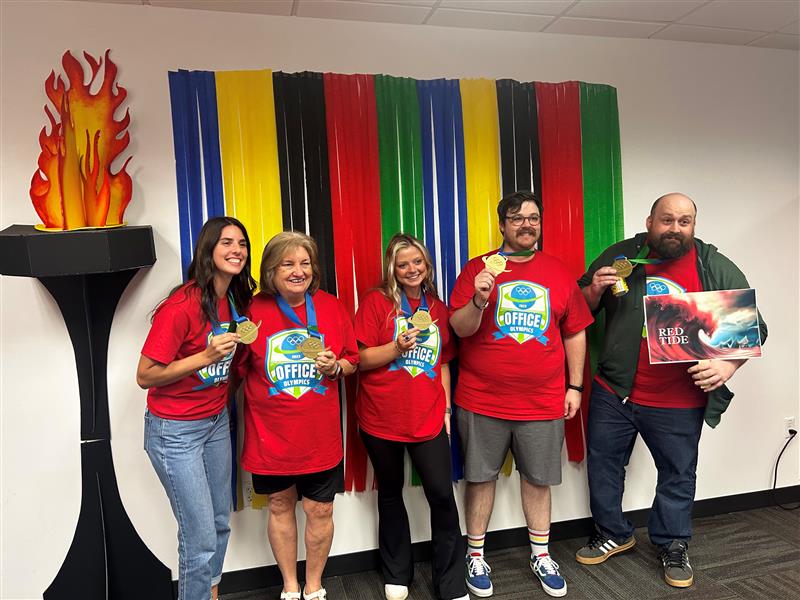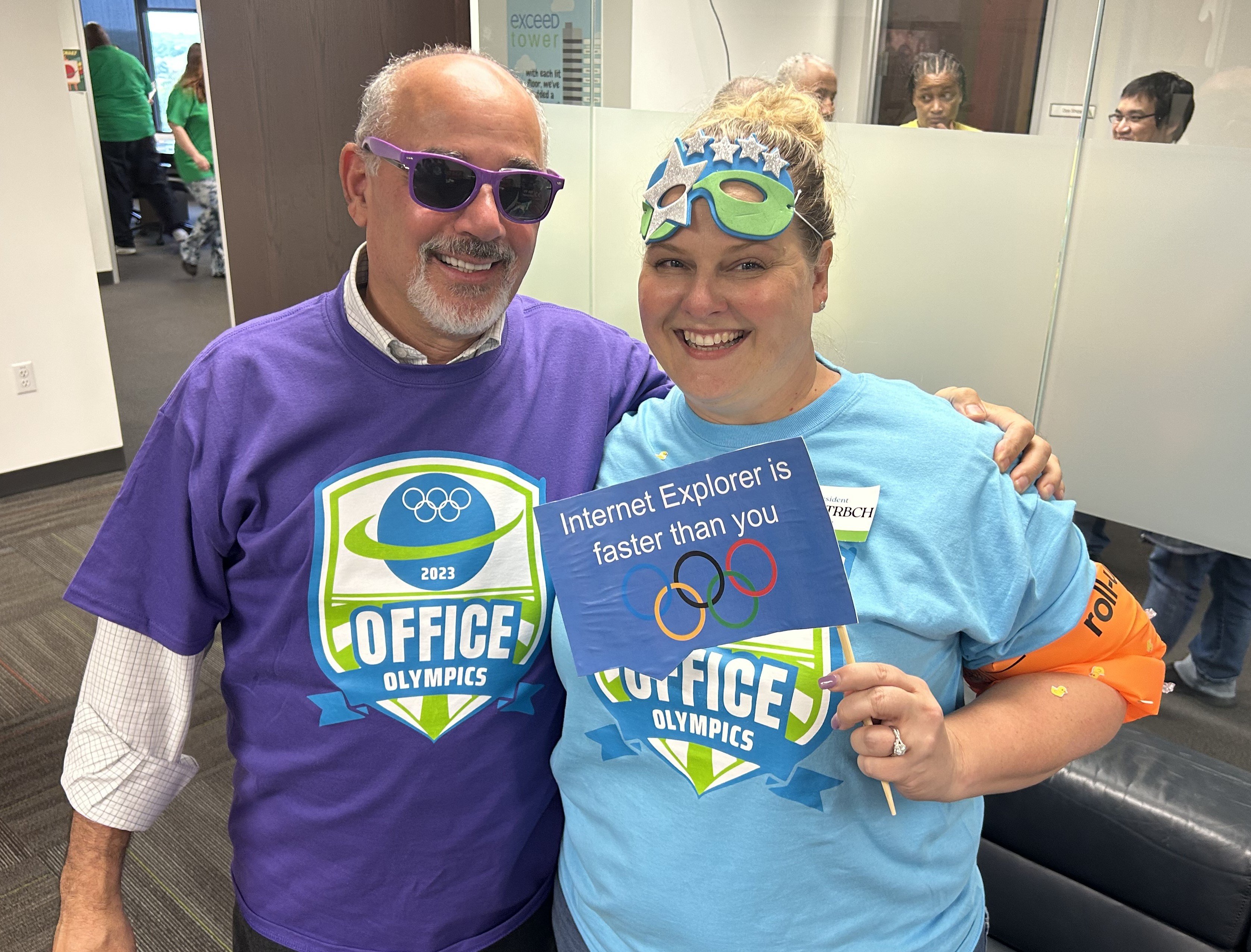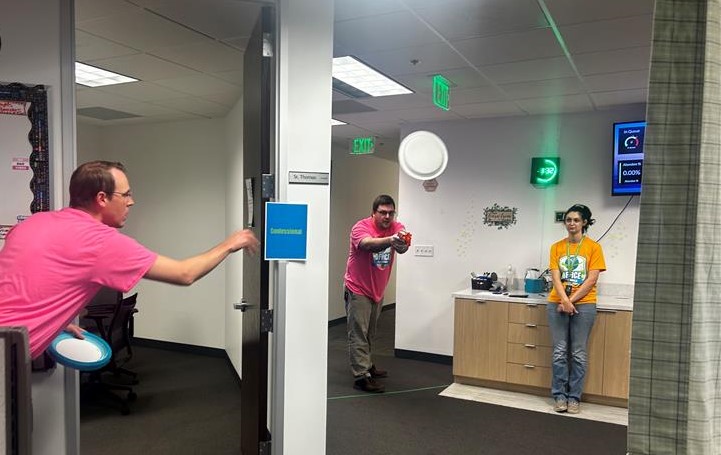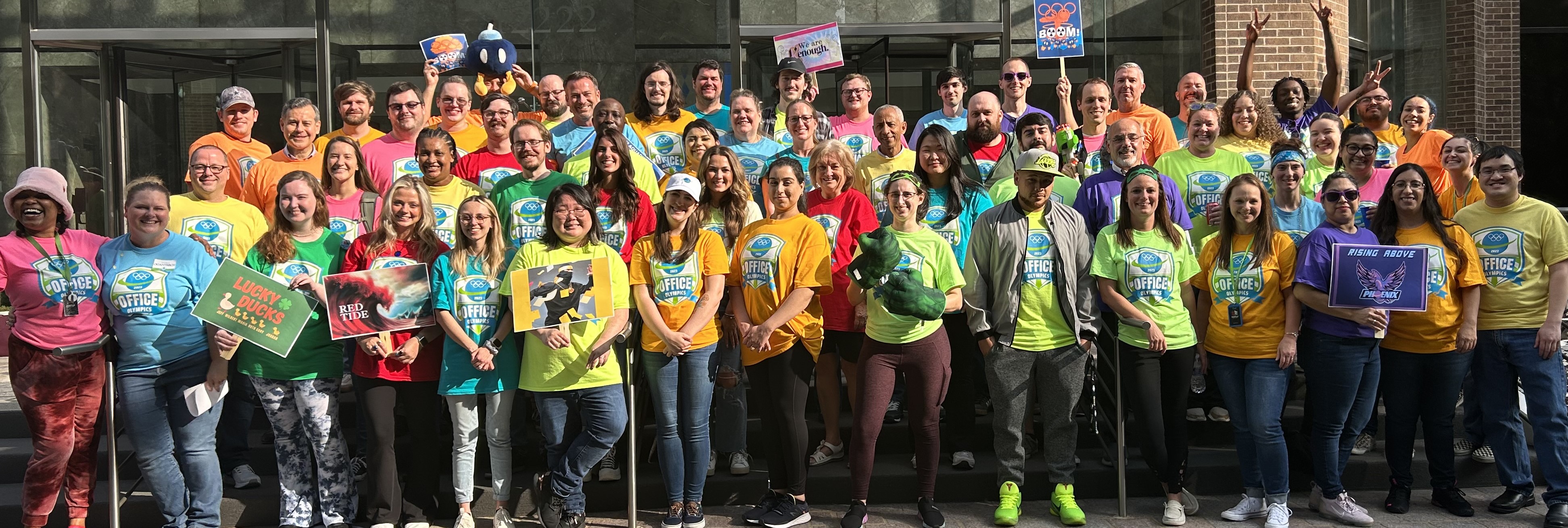
For many years, WebCE has hosted an annual Office Olympics event, and they have been great times for people to come together across departments, forge teams, and test their mettle in an arena of crazy competitions. The event is organized by a team of volunteer employees who focus on different parts of it, and this year, I was given the opportunity to lead the game development team. During the process, I saw how my years as a programmer have shaped my approach to tackling projects in general. I might not have imagined this when I began my career, but it turns out that the phases of the software development lifecycle worked wonderfully for this project as well.
Requirements Analysis
Our first meeting as a game team was energetic but a bit chaotic: we had a lot of ideas, but we kept heading in different directions. For example, we had conversations about specific games but also disagreements about why those would or wouldn’t work. We got some great ideas, but we weren’t unified in what we wanted and ultimately made no decisions that first meeting. In retrospect, we were generating solutions, but we hadn’t quite identified our problem yet.

We needed some way to make unified decisions, so for our next meeting we ignored the games altogether and spent our time trying to define our primary goal, the definition of success, and the affecting factors. The company (our “stakeholders”) described success as an enjoyable event with high employee engagement, but what would that look like? How could we foster that with our games?
We faced a few big challenges. First, WebCE has a distributed workforce, with some employees planning to be remote and some planning to be in-person at our Dallas offices. How could we engage both types of players? We could aim for higher engagement by making every game fully remote accessible (we did this in 2020), but those games have historically been less well received. On the other end we could ignore our remote employees altogether and focus on games that required in-person participation, which are more engaging and have been better received by the participants.
Second, we wanted the games to be fun and engaging for both casual and competitive players – we didn’t want anyone to feel like a burden on their team, but relying entirely on luck-based games would remove investment and defeat the purpose of competition.
In evaluating these questions, we came up with a set of basic guidelines for our team that created the foundation of what I consider our great success:
- We would create 8 games: 5 in-person and 3 remote accessible
- Every game would require some form of skill, either mental or physical, but that should be balanced by a unique challenge or degree of randomness that could level the playing field.
- All games should have a measurable scoring system: time, points, or distance. (We didn’t want people to feel like they lost due to the whims of a capricious judge!)
Design
With our guidelines in place, designing the games was actually a very simple process thanks to one trick: we didn’t design new games, we stole them! (Or maybe “Borrowed from the existing Olympics” could be a better way to phrase our process!) We probably could have spent more time and designed all new ideas, but the company event was already themed after the Olympics, so why not lean into it for inspiration?
The Olympic theme was particularly true for our dexterity games. We put a spin on the traditional discus event by replacing the disc with two paper plates stapled together. (We tried it with a single paper plate, but it was impossible to throw.) Curling was mixed with shuffleboard, and we used rubber band balls to create a layer of chaos that made the game an equal balance of skill and fortune. Nerf-skeet shooting was a timed plate-shooting contest that required a surprising level of teamwork. Leaning into an already common office sport, we set up trashcans in an increasingly difficult arrangement to make Trashketball (don’t worry, the paper balls were largely re-used and then recycled).  The final and most demanding of our dexterity games was a cross between the luge and the biathlon, where one team member sat in a rolling chair and had to shoot rubber bands at targets as the rest of their team pushed them around our largest conference room. Remote participation was difficult for these games, but the teams included the remote participants in their own way, through video calls or other forms of communication so their teammates could watch and cheer them on.
The final and most demanding of our dexterity games was a cross between the luge and the biathlon, where one team member sat in a rolling chair and had to shoot rubber bands at targets as the rest of their team pushed them around our largest conference room. Remote participation was difficult for these games, but the teams included the remote participants in their own way, through video calls or other forms of communication so their teammates could watch and cheer them on.
Stepping away from our Olympic theme, we moved on to the Remote games. For these, the primary element was incorporating Microsoft Teams and the various features that it provides. Screen sharing turned into Pictionary, as the remote players used Paint (or another art style application) in place of a whiteboard. Audio communication was utilized for the collaborative solving of a Redactle puzzle (an online game revolving around filling in the blanks to identify an article). Video elements facilitated our most complicated game, the laser maze. In this heist-inspired event, one in-person team member was blindfolded while the rest of the team joined a video call remotely from home or a conference room in another part of the building. Their goal was to audibly guide their blindfolded teammate through the maze, avoiding the red-tape “lasers”, with the help of three security cameras that were joined to the call.
Implementation and Testing
With our games designed, it was time for us to collect the materials and test our visions. Thanks to some creative reuse of common office supplies, we only had to purchase a few materials, namely the rubber band balls and ping-pong balls. Everything else was already available around the office, and in a humorous turn, the Nerf guns were some of the easiest equipment for us to find!
With our supplies ordered and Amazon packages received, we spent our next two meetings testing the games we had designed. It was a good thing that we had dedicated time for this too, because every single game had problems that needed to be addressed. Nerf-skeet shooting was too short, Pictionary was a mess to judge, and there was confusion about how the cameras would work with the laser maze. While we play-tested the games, we discussed which elements would need to change to make the game interesting and challenging, and we recorded any major questions about each game in an FAQ that we could give to the participants to ensure a smooth game day.

Once we were happy that the games were well defined and had a solid scoring system, we sent the rules and FAQ out to the company to pique people’s interest. Two weeks before game day, we set up the game stations in the office and let teams practice the events beforehand. At this point, I had decided that I wouldn't compete in the games, so I assumed the role of rules liaison to ensure that there was a single point of contact for questions or rule clarifications. This also helped to prevent the other games committee members, who were split across the participating teams, from accidentally having insider information about other teams’ strategies that could give them an unfair advantage.
Deployment
In the last few days leading up to the Olympics, team schedules were decided, judges were assigned, and final game locations were set up. A separate committee helped with most of the personnel assignments and day-of preparations, but I tried to find time to talk to each of the judges for last minute questions. Ultimately, I wanted the game judges to have fun as well, so they were free to decide how to handle any grey zones on their own, with the one guideline that they should always stick to their previous decisions: once a ruling was decided, it could not be changed later. This was particularly important because some people (okay, okay, yours truly!) still remember a particularly disastrous game in 2019 where a ruling was changed halfway through the day.
Retrospective & Maintenance
The conclusion to our work? A solid success. We had almost 80% employee participation, and almost all the games proceeded within expected bounds. There were a few hiccups (for example, we forgot to account for login times in the conference rooms for the Pictionary event), but the judges handled those with flair and kept things fair and balanced on the day of. With the Olympics finished, the last work I put in towards the event was to document our finalized games in a shared company folder. Now, instead of passing game ideas down through word of mouth like the storytellers of old, we can sit back and hand our documented playbook on to next year’s team. When that time comes, I’ll leave the development process up to them, but I’ll definitely suggest they have at least one of our programmers on the team!
